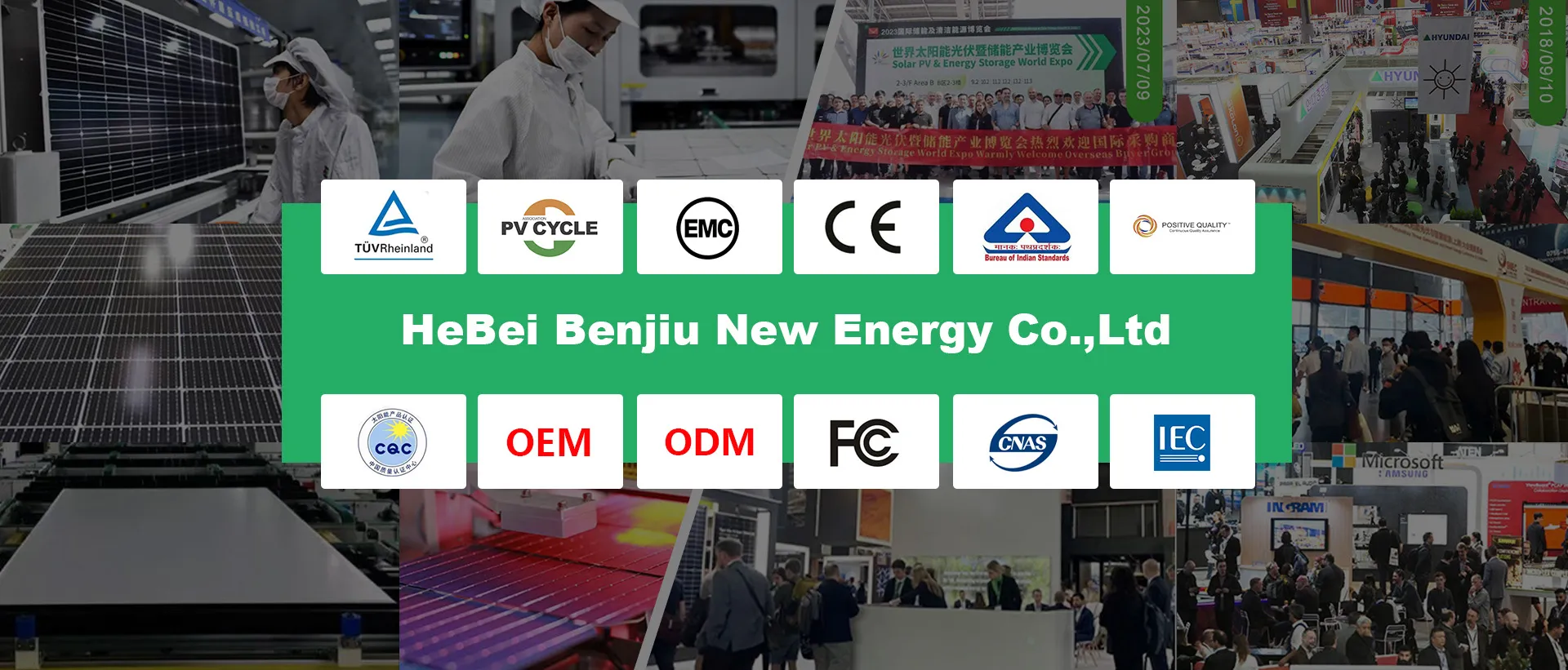solar panel size for 5kw
Understanding Solar Panel Size for a 5 kW System
As the demand for renewable energy continues to rise, solar power has emerged as a popular choice for homeowners and businesses alike. One of the most common inquiries is regarding the size of solar panels required for a specific power output, such as a 5 kW system. Understanding how solar panel size correlates with energy production is essential for anyone considering investing in solar energy.
What Does a 5 kW System Mean?
A 5 kW solar system refers to its capacity to produce 5 kilowatts of power under optimal conditions. This measurement indicates the maximum output that the system can generate at any single moment. However, actual performance can vary based on numerous factors, including panel efficiency, geographic location, and local weather conditions.
Determining Solar Panel Sizes
Solar panels vary in size and efficiency. Typically, a standard residential solar panel has a power output ranging from 250 to 400 watts. To establish how many panels are required for a 5 kW system, we can use the following calculation
1. Choose Panel Wattage Let’s assume we select 300-watt panels, a common size for residential systems. 2. Calculate Number of Panels Needed Divide total system size (5,000 watts) by the wattage of each panel (300 watts).
\[ \text{Number of Panels} = \frac{5000 \text{ watts}}{300 \text{ watts/panel}} \approx 16.67 \]
This calculation suggests you would need approximately 17 panels to achieve a 5 kW system. Consequently, if you were using 400-watt panels, you would only need around 13 panels
\[ \text{Number of Panels} = \frac{5000 \text{ watts}}{400 \text{ watts/panel}} \approx 12.5 \]
Total Area Required
solar panel size for 5kw

Next, it’s important to understand the total area that a 5 kW solar system will occupy. A typical solar panel measures about 1.6 square meters (17.2 square feet). For our calculations
- Using 300-watt Panels \[ \text{Total Area} = \text{Number of Panels} \times \text{Area per Panel} = 17 \times 1.6 \text{ m}^2 \approx 27.2 \text{ m}^2 \]
- Using 400-watt Panels \[ \text{Total Area} = 13 \times 1.6 \text{ m}^2 \approx 20.8 \text{ m}^2 \]
Other Considerations
Beyond just size and number of panels, there are other critical factors that can affect the performance and efficiency of a 5 kW solar system
1. Orientation and Tilt Solar panels should ideally face south in the northern hemisphere for optimal exposure to sunlight, and the tilt angle can enhance performance based on geographic location. 2. Shading Trees, buildings, and other obstructions can obstruct sunlight, reducing overall system efficiency. It's crucial to evaluate potential shading issues before installation.
3. Inverter Selection A solar inverter converts the DC power generated by the panels into AC power usable in homes. Choosing a compatible inverter is essential for maximizing energy production.
4. Local Climate The amount of sunlight your location receives throughout the year can influence how many panels you may need. Regions with higher sunlight hours will produce more energy than those with frequent cloud cover.
Conclusion
In summary, size plays a significant role in determining the composition of a 5 kW solar system. Whether opting for 300-watt or 400-watt panels, installing a sufficient number to achieve a total capacity of 5 kW while considering the physical space is crucial. Additionally, understanding factors like orientation, shading, inverter choice, and local climate can greatly influence the efficiency and effectiveness of your solar installation.
Investing in a solar energy system presents not only an opportunity to reduce energy bills but also contributes positively to the environment. With proper planning and consultation with solar professionals, you can successfully design a system that meets your energy needs.
-
String Solar Inverter: The High-Efficiency Solution for Smart Solar EnergyNewsJul.14,2025
-
Revolutionizing Rooftop Energy with the Power of the Micro Solar InverterNewsJul.14,2025
-
Power Independence with Smart Off Grid Solar Inverter SolutionsNewsJul.14,2025
-
On Grid Solar Inverter: Powering the Future with Smart Grid IntegrationNewsJul.14,2025
-
Monocrystalline Solar Panels: High-Efficiency Power for the Future of Clean EnergyNewsJul.14,2025
-
Bifacial Solar Panel: A Smarter Investment for Next-Generation Energy SystemsNewsJul.14,2025







